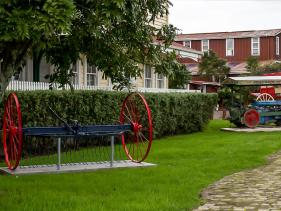For information on local attractions click here
To view images of Tauranga visit our Photo Gallery or click here
Tauranga is the largest city in the Bay of Plenty region with an urban population of 141,600 (June 2018). Maori settled here late in the 13th century and Europeans in the early 19th century.
More Information
Tauranga dates from the establishment of a Church Missionary Society mission at Te Papa, as it was then known, in the 1830s. During the wars of the 1860s the government established two redoubts (fortifications) there. The original mission complex, The Elms, still stands, and the outline of the Monmouth redoubt is still visible.
With the promotion of colonisation in the 1870s, the settlement was made a borough in 1882. In the later 19th century its population declined.
Dairy farming developed from the 1910s and the population grew, reaching 4,712 in 1945.
In 1950 Mt Maunganui was made a port for timber from the Volcanic Plateau. The 1978 Kaimai Tunnel improved connections between Tauranga and the Waikato region with growth further boosted by horticulture – in particular kiwifruit growing – in surrounding districts and by the lifestyle appeal of the town.
In 1976 Tauranga was one of a number of medium-sized urban areas, with a population of 48,000 – smaller than Napier or Invercargill. In 1996 Tauranga’s population was 82,092, and by 2013 it had reached 114,789, making it New Zealand's sixth-largest city.
The completion of a harbour bridge in 1988 brought Tauranga and ‘the Mount’ closer (they amalgamated in 1989) and has promoted growth in both parts of the enlarged city.
Source: Teara.govt.nz

